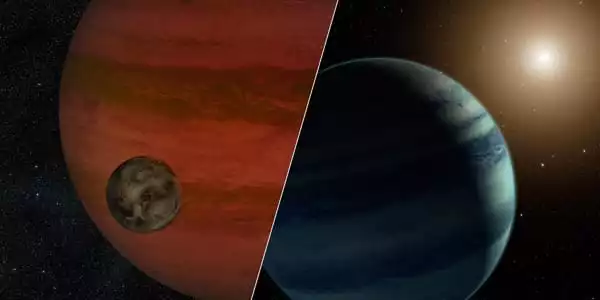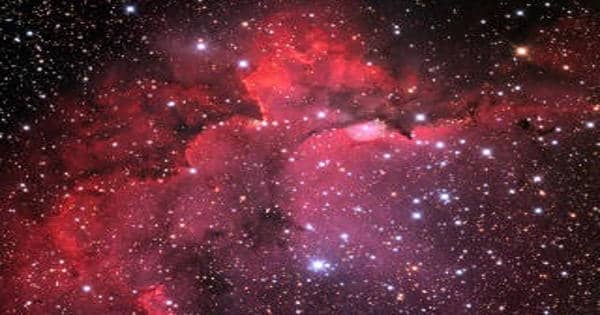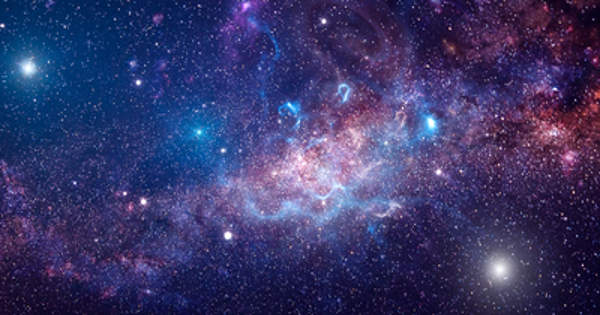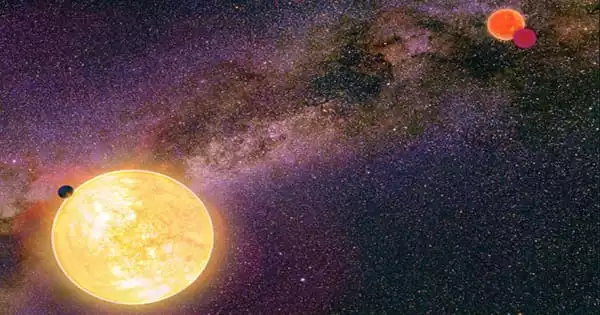In our solar system, moons are common. In reality, our sun’s family includes more than 200 known moons. What about other types of solar systems? It makes sense to believe that planets’ moons are common throughout our galaxy and beyond. However, these exomoons – moons that exist outside of our solar system – are difficult to discover. They’re even more difficult than distant worlds. And we only know a little more than 4,000 exoplanets out of the billions of planets that are believed to circle stars in our Milky Way galaxy.
An exomoon, also known as an extrasolar moon, is a naturally occurring satellite that orbits an exoplanet or other non-stellar extrasolar entity. The empirical research of natural satellites in the Solar System leads to the conclusion that they are likely to be common features of planetary systems. The vast majority of discovered exoplanets are massive planets. The biggest planets in the Solar System contain a huge number of natural satellites. As a result, it is plausible to believe that exomoons are similarly common. Some of the same researchers that discovered the first putative exomoon claim to have discovered another.
Dubbed Kepler 1708 b i, the satellite has a radius about 2.6 times that of Earth, and circles a Jupiter-sized exoplanet that orbits its parent star about once every two Earth years, the team reports in Nature Astronomy. That sunlike star lies about 5,700 light-years from Earth.
The potential exomoon, which is still a possibility at this time, circles the huge planet Kepler 1708b. This planet is somewhat smaller than Jupiter, but it is 4.6 times more massive. It takes around two years to orbit its sun-like star, which is 5,436 light-years away from Earth. Larger moons, as expected, are easier to detect than smaller moons.
Dubbed Kepler 1708 b i, the satellite has a radius about 2.6 times that of Earth, and circles a Jupiter-sized exoplanet that orbits its parent star about once every two Earth years. That sunlike star lies about 5,700 light-years from Earth.
The researchers sifted through a database of over 4,000 exoplanets discovered by NASA’s now-retired Kepler satellite telescope to find this treasure. Because big planets circling far from their parent star are more likely to have detectable moons, the researchers concentrated on a sample of 70 exoplanets.
The new candidate exomoon was discovered while scientists were researching 70 frigid, gas giant planets. They, like Jupiter and Saturn, orbit far away from their stars. There is less gravity from the stars at those distances to push at any moons and pull them out of their orbits. They only discovered one plausible exomoon signal, but it’s a nice one.
These planets range in size from half to twice the size of Jupiter. They all take more than 400 Earth days to orbit its star or have an estimated average surface temperature of less than 300 kelvins (about 27° Celsius), which is somewhat higher than Earth’s.

If planets like Jupiter, Saturn, Uranus, and Neptune are any indication, then it seems reasonable that other giant planets should have moons as well, maybe even dozens, just like in our own solar system. We don’t have any moons the size of these new candidates, but if there are big moons out there, then there should be smaller ones as well.
Following the additional screening, which included excluding exoplanets with non-near-circular orbits (which are statistically less likely to harbor moons), the team uncovered a strong candidate for an exomoon. When it moved across the face of the parent star, it, like its host planet, caused detectable attenuation of the star’s light.
The discovery of the first putative exomoon, named Kepler 1625 b, has been met with widespread skepticism. The team warns that further studies by other instruments, including as the recently deployed James Webb Space Telescope, are needed to confirm both hypothesized exomoons. However, future observations will have to wait: the newly discovered exomoon candidate and its planet will not pass in front of the parent star again until March 24, 2023, according to the researchers.
So far, there have been a few other possible exomoons. One of these may be orbiting Kepler 1625b, a Jupiter-sized exoplanet. In 2018, it was announced that it might have been discovered. It, too, orbits far from its star, as does Kepler-1708 b-i. Kepler 1625b is approximately 8,000 light-years away from Earth. If it is a true moon, it is enormous, roughly the size of Neptune! Both Kepler and the Hubble Space Telescope provided data on this putative moon.
















